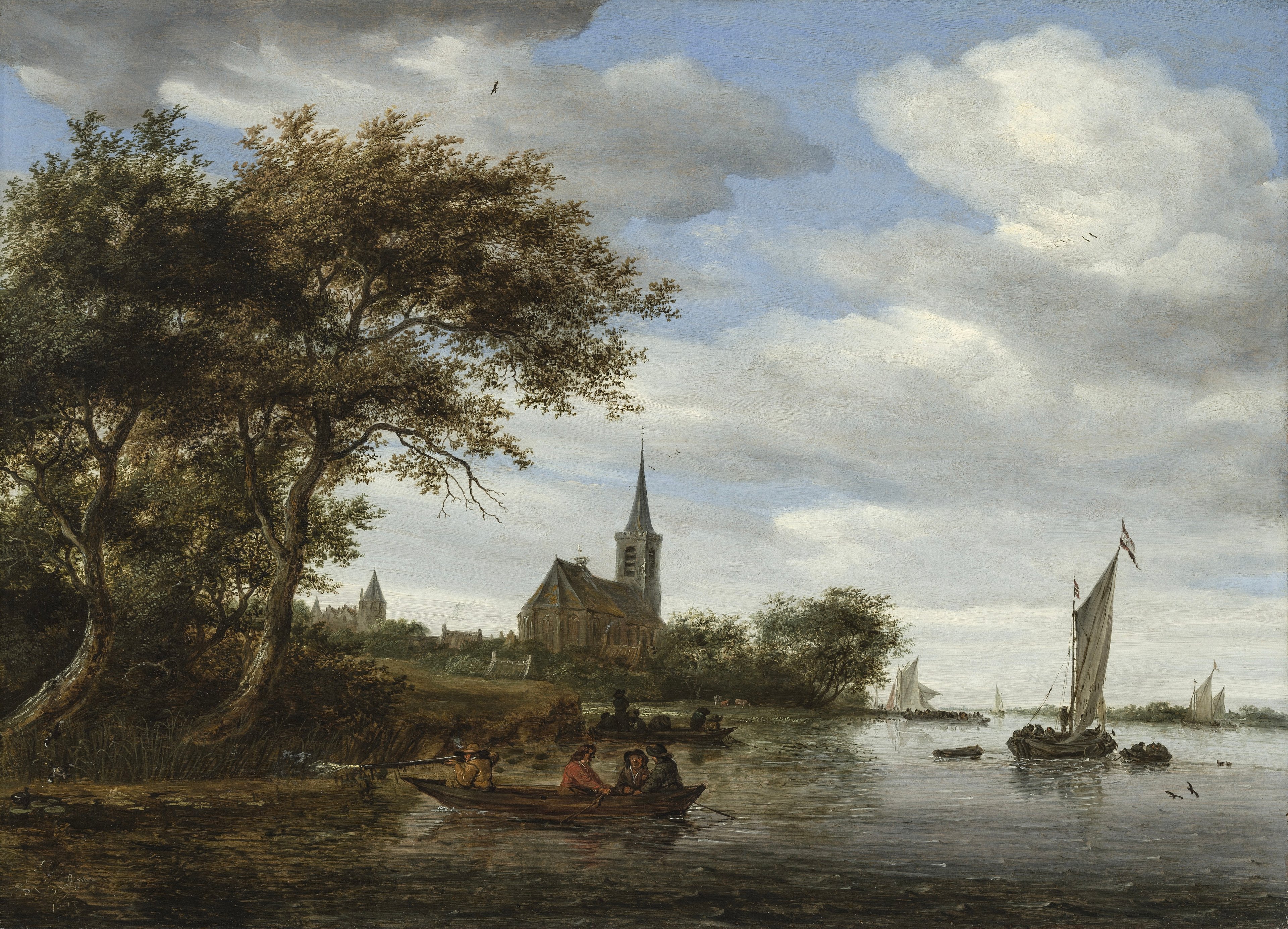
Dutch landscape painting of the 17th century shows an intensely observed, stylized reality — characterized by expansive skies, calm waters, and human presence. It becomes a symbol of a nation that reclaimed space from the sea and drew cultural identity from it.
Broad skies, quiet land
In its heyday around the middle of the 17th century, Dutch landscape painting always has its eye firmly focused on the actual appearance of the country. It does not always provide depiction that is true to detail in every respect. Rather, it represents a constantly varied reflection of an intensely observed reality, which to this day has become its general distinguishing feature par excellence: the low horizon, the exuberant cloud formations in the sky which are extensively described and often captured in nuanced shades. The country itself has few and consequently all the more distinct features: groups of trees on the banks of the ubiquitous waterways, both natural and artificial, as well as striking church spires of mainly smaller towns and villages, stand out sharply against the backdrop of the cloudy sky.
Equally present are the inhabitants of the country: the human activities depicted here may not appear all that spectacular, but they point to an important, indeed fundamental cultural and geographical relationship: hunting as well as the transportation of passenger and goods are closely related to water, the element which the Dutch feared most for centuries, but which they also learned to master. The young republic, which successfully stood up to its adversaries, also had to hold its own against the overpowering forces of nature. The result was an extremely well-developed, largely man-made landscape that in no small part had been wrested from the sea.
These repeatedly reflected, special geographical conditions gave the Netherlands, the “Low Countries”, their name. The historical achievement of painstaking land reclamation contributed significantly to the fact that the Dutch claimed a special role for themselves after gaining independence. Thus just like marine art, landscape painting is an expression of a national self-image that lives on to this day.
Text: Ulrich Becker